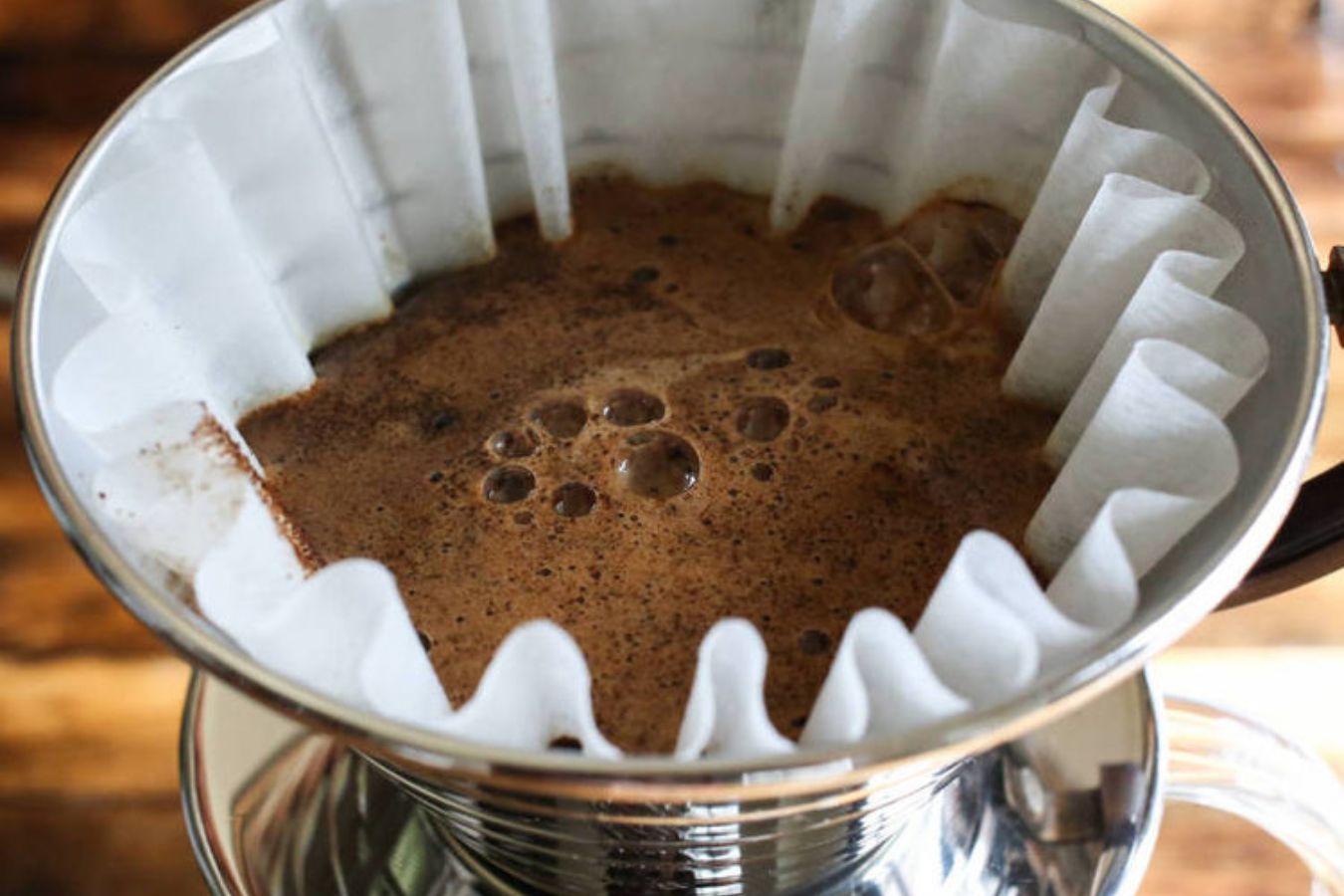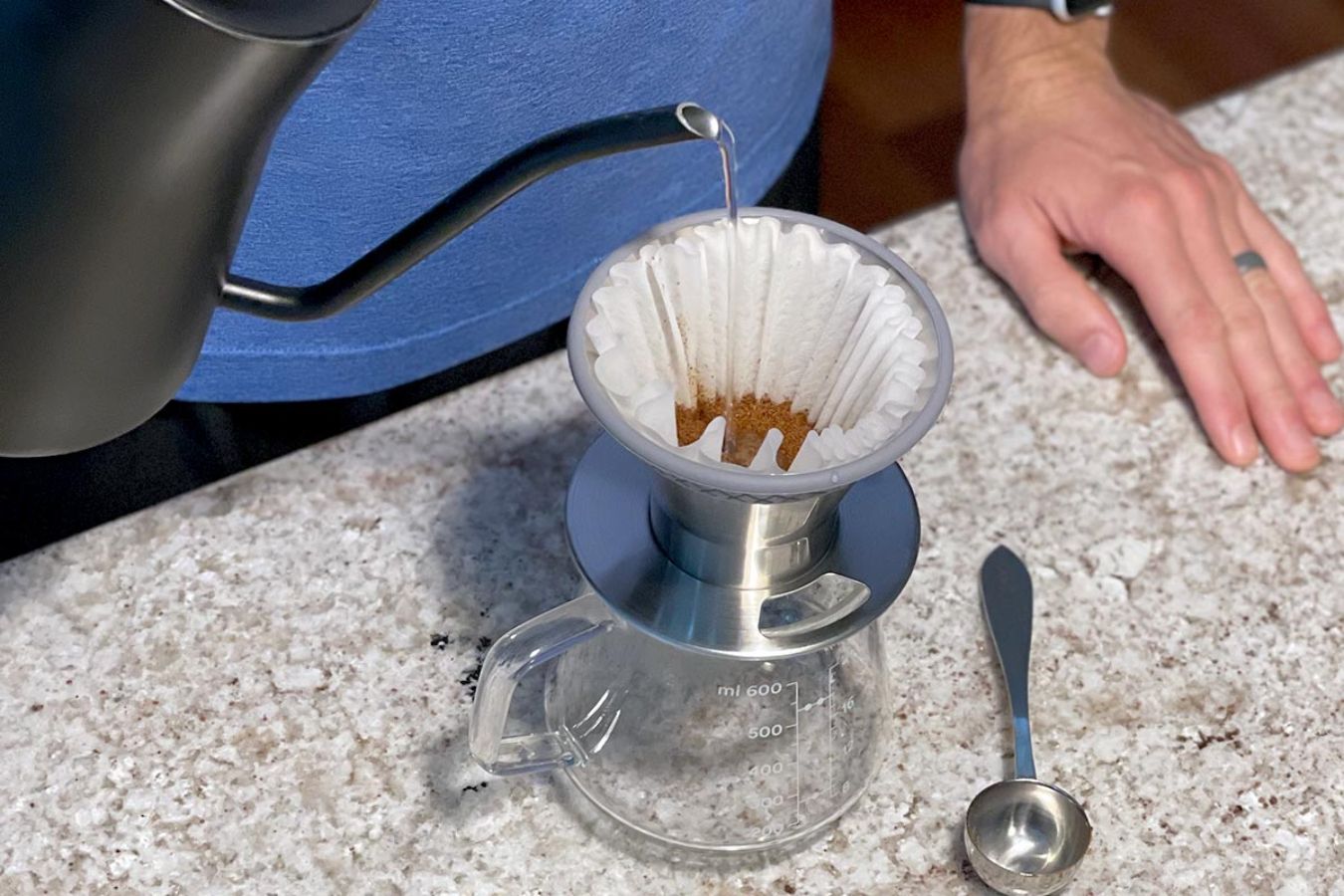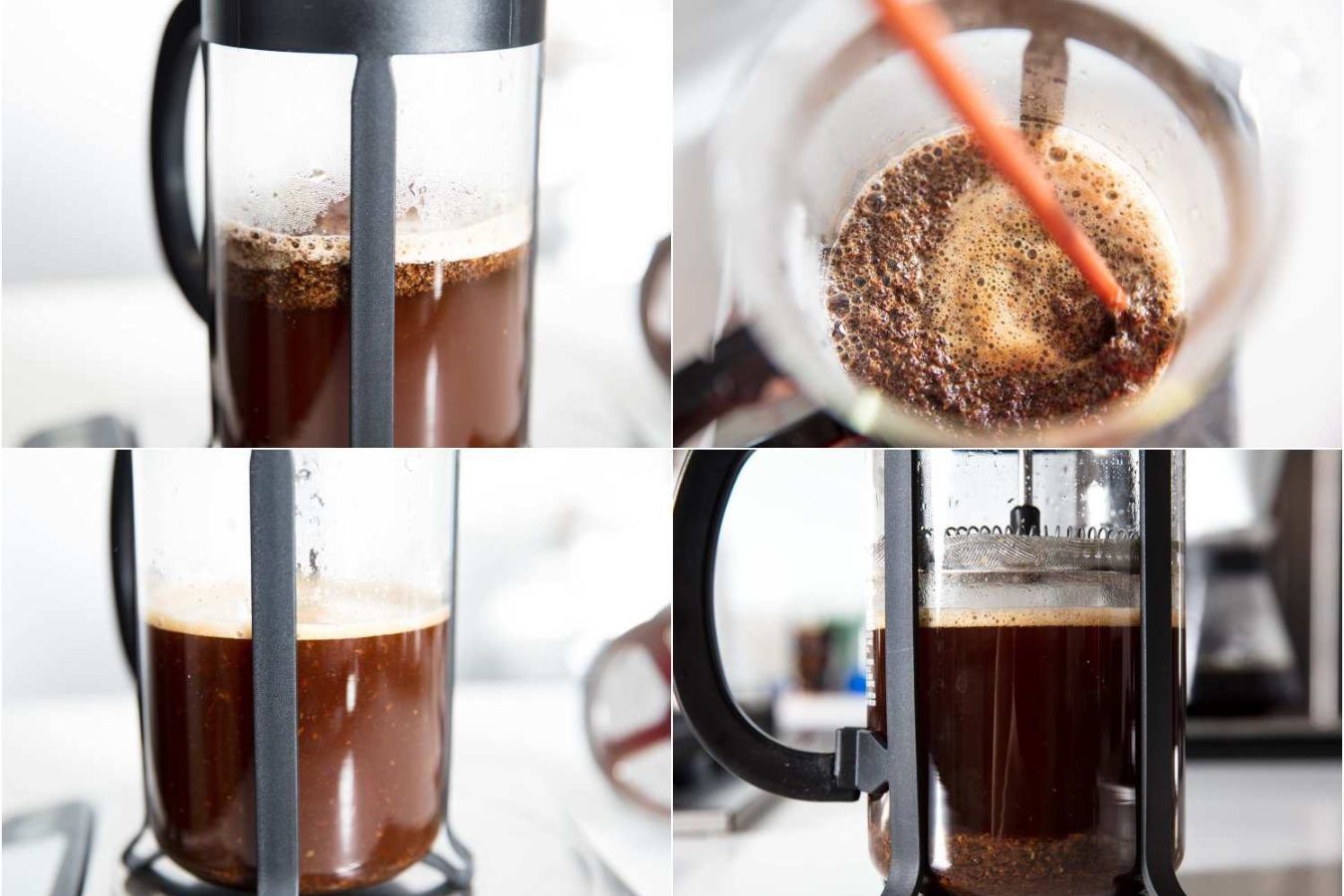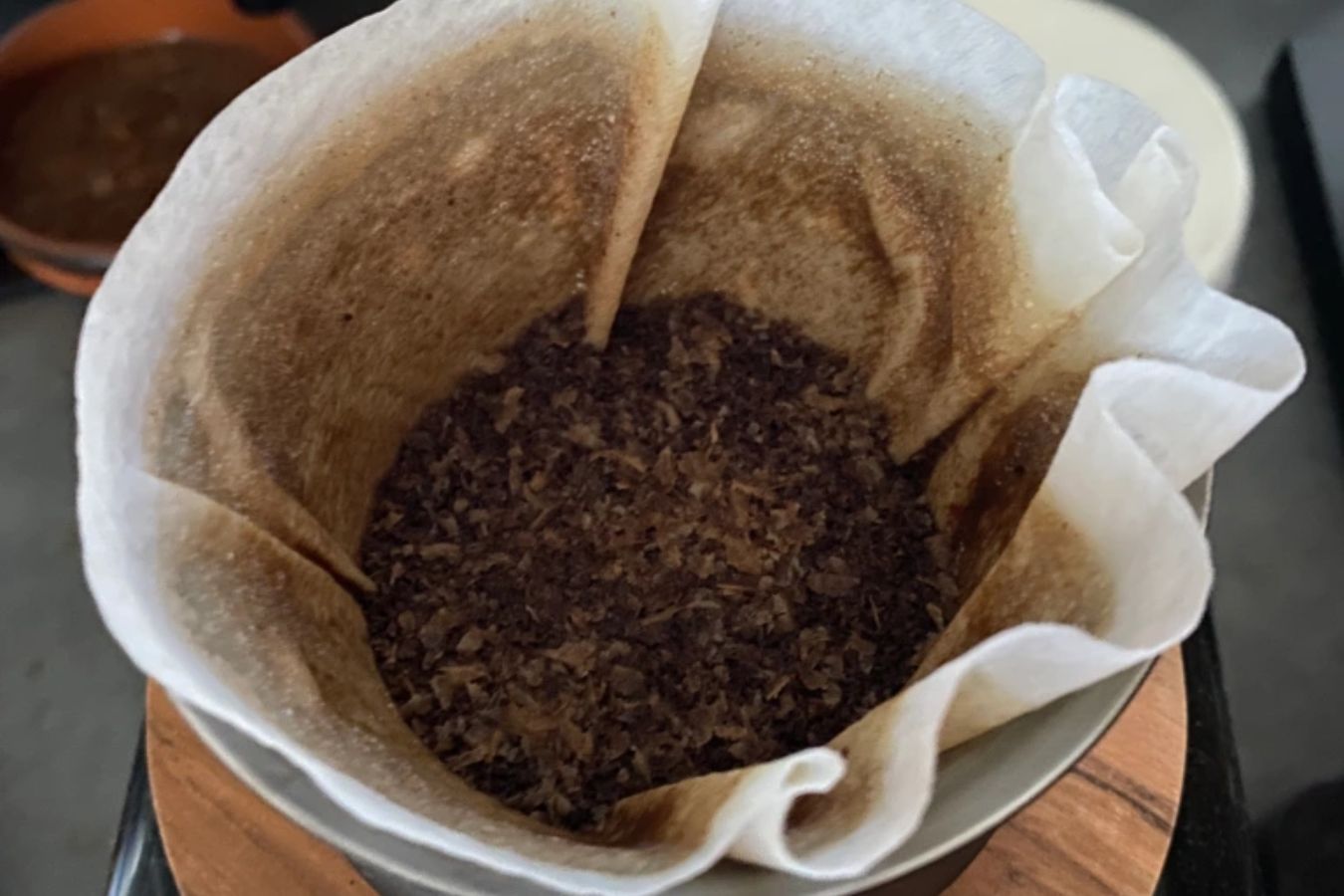
Why is it necessary to soak coffee before brewing it?
According to Scott Rao, Prewetting has multiple advantages in coffee extraction: it reduces the appearance of channels (also known as channeling), which helps stabilize and boost extraction rates. Prewetting (also known as preinfusion) in espresso helps keep fine coffee beans from sinking to the bottom of the basket, resulting in a compact layer.

Furthermore, we must be aware that CO2 will build and accumulate in the beans during the roasting process; it will take several weeks for the coffee to expel all of the gas from the beans, but there will be a significant loss in the meantime. Scent. As a result, when the coffee powder is exposed to hot water, the cellulose structures in the beans expand, releasing a considerable amount of CO2.
This explains why coffee frequently “blooms,” becomes effervescent, and eventually settles – a phenomenon known as Blooming in the Pour Over technique.
Because CO2 is continually generated in the first stage. If you begin extraction without first steeping the coffee, the water will not go deep enough into the grain structure to extract the most flavors.
How do you soak properly?
Of course, enjoying coffee will be easier when you pay less attention to the minutiae of the early brewing procedure. On the other hand, if you are very concerned about flavor quality following extraction, you may need to consider two factors: How much water should I soak in? And how long will it last?
According to Scott Rao, the first is the best: a 3:1 ratio of water to coffee by weight. Because coffee grounds can absorb twice their weight in water, a 2:1 ratio will result in total saturation, and no water will be able to escape. As a result, a 3:1 balance is good for allowing enough water to escape from the coffee mass.
Second, there are no set amount of seconds for steeping; instead, you must immediately observe when the bubbles on the coffee layer cease appearing to determine when the brewing is complete. When a bubble appears during the brewing process, it implies that a dry part of the coffee has been moistened and CO2 has been liberated. The coffee layer has completely absorbed the water when there are no more bubbles.
Extraction and Pre wetting
You’ll come into the notion of Pre-wetting when you learn more about steeping coffee before each brewing procedure; therefore,e when we talk about extraction, we’ll use the actual phrase to make it easy for you to discover the elements. More English-language articles on the subject.
Water will always run through the wet regions of the coffee, generating drainage channels that leave dry, lumpy areas (Chanelling effect) that induce extraction if a barista misses prewetting or stops brewing too soon. Production that is erratic Because your extract will have a low solute content (lower TDS), it will be challenging to remedy uneven wetting once it happens.

Returning to the structure of coffee beans, most of us are aware that the fundamental structural component of coffee bean cells is cellulose, which is water-insoluble.
After roasting, these cells are dried, leaving empty chambers for soluble flavor components and oil. Because the surfaces of the coffee beans are totally in contact with the water during the grinding process, some microscopic debris (fine particles) can be dissolved very instantly. At the same time, the large trash is connected with the cells. It will take much longer for complete cells to extract.
Water must travel through the cellulose cell wall to reach and dissolve the particles in the spaces, then diffuse back through the cell wall after mixing. This is a prolonged and passive diffusion process. As a result, the main benefit of steeping coffee is that it gives water more time to infiltrate the grain structure before beginning the diffusion process in the extraction phase.
Is it true that soaking increases the rate of extraction?
The coffee is more prone to dissolve due to the extended brewing time – Assists in increasing the extraction yield (Extraction yield)
Although there are more soluble components, the concentration of extract (TDS) is unlikely to rise with the amount of water you extract (dispensing ratio).
When should you soak, and when should you not?
Coffee brewing is a vital step with numerous benefits, but it is not always appropriate in all situations, and it can even be detrimental!
Assume we have two French presses with a 17:1 ratio and 95°C hot water; one will be soaked for 45 seconds with a 2:1 balance, and the other will be loaded with enough water that no prewetting is necessary. Both will take about 4:30 minutes to brew.
With the above example, you can see that pouring 17 parts of water into a neon-soaked pot will dissolve all of the coffee with the highest diffusion capacity and the most steady temperature. When prewetting at a 2:1 ratio, however, there will not be enough water to dissolve the coffee thoroughly, and because there are only two parts of water, the ability to lose heat will be sped up.
After that, you’ll have to wait up to 45 seconds to add the rest of the water and tolerate the rapid drop in temperature while you wait for the coffee to dissolve completely. Soaking appears to be an extra step in this situation, resulting in a significant heat loss.
Prewetting Summary
Thus, steeping can positively affect most coffee brewing processes, mainly when the same coffee is extracted at the same rate and temperature. Prewetting makes it easier to create consistency in a variety of preparation timeframes.

However, it should be noted that each mixing approach has a “creative” component, so you can completely disregard all frameworks and freely adjust, depending on whether or not you want to employ the soaking method as long as you are happy with the quality of your coffee.